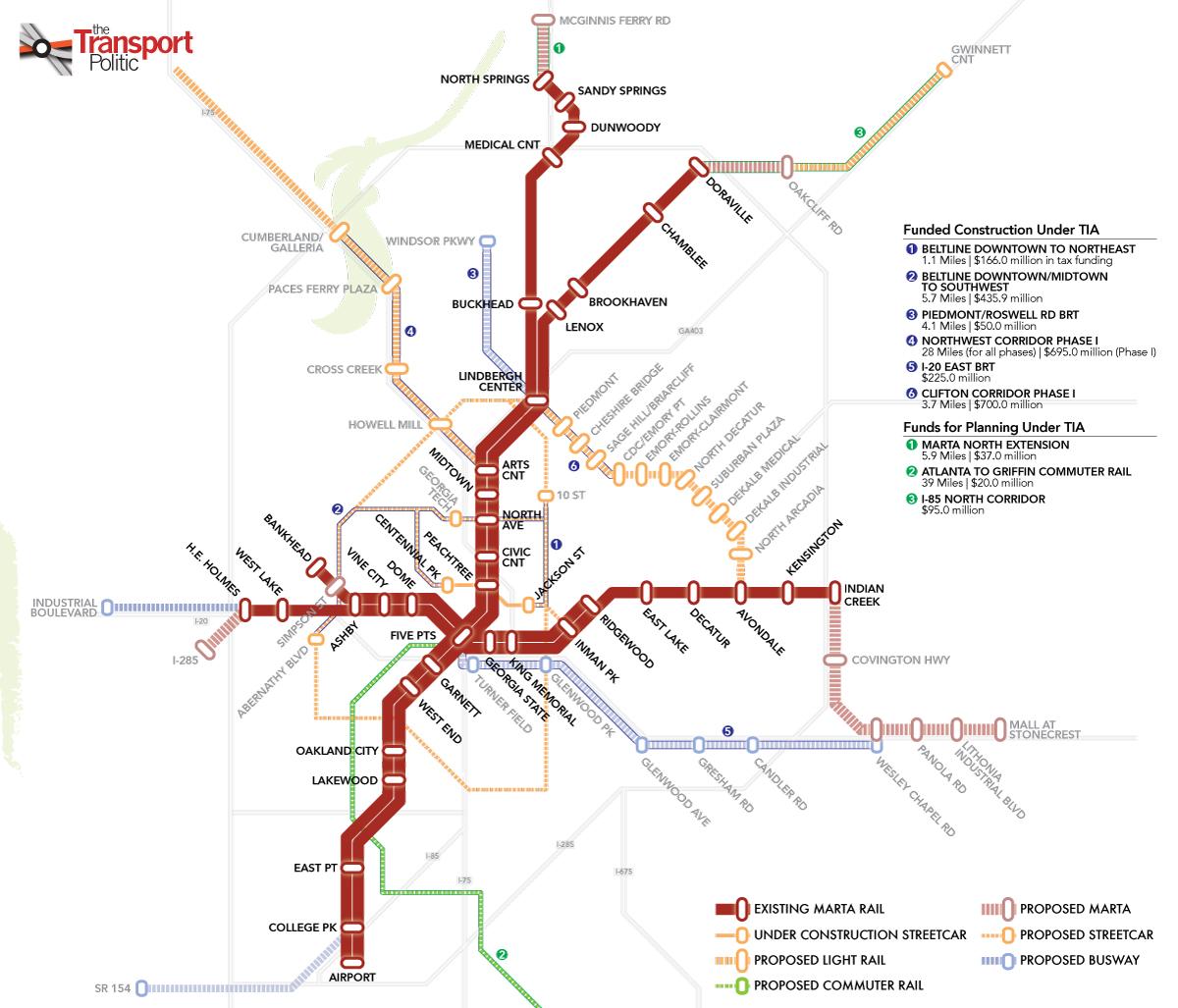

They can also be purchased at RideStores or online (delivery for online purchases takes about a week).


The easiest way to buy a Breeze Card is at one of the vending machines inside of any MARTA train station.
:no_upscale()/cdn.vox-cdn.com/uploads/chorus_asset/file/4361925/8BillionLegit_20_5B549676_5D.0.png)
#Marta transit map how to
How to pay Riding MARTA trains requires the purchase of a $2 Breeze Card, onto which you can load cash value, or single or multi-trip tickets and passes.Įach traveler needs their own separate Breeze Card.
#Marta transit map free
Included in the fare are up to 4 free transfers, available within a period of 3 hours from the start of your trip.
#Marta transit map for free
Two children under 46 inches tall may ride for free with each paying adult. Discounted fares of $1 are available for seniors and people with disabilities. Tickets & Faresįares The standard fare to ride a MARTA bus or train is $2.50 for a single trip. Generally speaking, bus services in Atlanta operate between 5am and 1:30am on weekdays, and between 5am and 12:30am on weekends and holidays, although the precise operating times vary by route. MARTA’s bus network has much broader coverage than its rail network, serving suburbs and the more outlying intown neighborhoods as well as the central Downtown and Midtown areas. On weekdays, trains arrive every 15 minutes between 6am-7pm, and every 20 minutes outside of this period. On weekends, trains run every 20 minutes all day. Train services operate daily between approximately 5am and 2am weekdays, and between 6am and 1am on weekends and holidays. The core of MARTA’s public transit system is its heavy rail services, with two east-west and two north-south lines connecting at downtown Five Points. You can plan your trip through MARTA’s website, or alternatively use the interface provided through Google Maps. These rail and bus routes operate alongside several other networks: several regional bus services that provide transport in adjacent counties, connecting with Atlanta’s bus and rail routes the Atlanta Streetcar, a short line offering transportation through the center of Downtown and several free shuttles that connect MARTA train stations to local malls and campuses.įor most tourists, the rail system is the best option for car-free travel through the city, as its serves most areas of likely interest to tourists. A large network of bus routes intersects with these rail lines and provides transport to and between areas not directly served by them. At the center of Atlanta’s transit is its train system, providing rapid travel along the city’s main north-south and east-west arteries, and connecting its central business and residential areas to more outlying suburbs and the airport. I mean that was very reflective of things that were trying to be done in the 70s, but never really panned out most places.Atlanta’s public transportation is overseen by the Metropolitan Atlanta Rapid Transit Authority, known as MARTA. “It would whisk you over to the Convention Center and other parts of downtown. “So you could exit the MARTA subway train, go upstairs, get on the people mover,” VanSickle says. In the 1990s, the Atlanta Housing Authority tore down the Perry Homes units to build new mixed-income apartments. It would have been the last stop on the Green Line. The collection includes sketches for train stations that were never built ─ such as the Perry Homes transit station. “I mean you kind of see the evolution of where the lines could have gone from the very beginning when they were just the first drawings all the way up to formation of this new agency that was created to build and operate it.” “These are actually the original documents detailing the decisions that we made,” Vansickle says. He said the collection tells the story of how MARTA began and why stations look the way they do today.


 0 kommentar(er)
0 kommentar(er)
